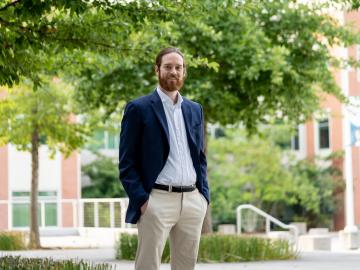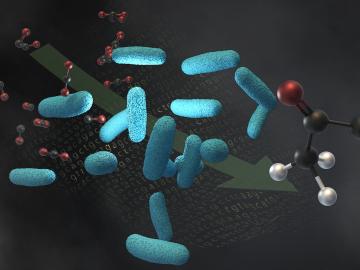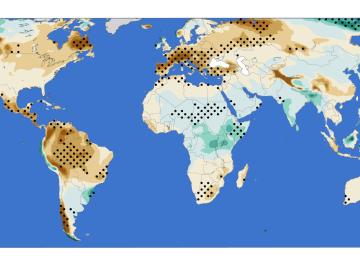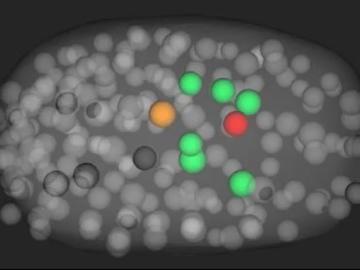
Filter News
Area of Research
News Topics
- (-) Advanced Reactors (5)
- (-) Biology (29)
- (-) Coronavirus (9)
- (-) Quantum Science (12)
- 3-D Printing/Advanced Manufacturing (17)
- Artificial Intelligence (15)
- Big Data (10)
- Bioenergy (21)
- Biomedical (11)
- Biotechnology (3)
- Buildings (16)
- Chemical Sciences (15)
- Clean Water (6)
- Composites (6)
- Computer Science (34)
- Critical Materials (5)
- Cybersecurity (10)
- Element Discovery (1)
- Energy Storage (27)
- Environment (39)
- Exascale Computing (8)
- Fossil Energy (1)
- Frontier (10)
- Fusion (11)
- Grid (16)
- High-Performance Computing (16)
- Hydropower (8)
- Irradiation (1)
- Isotopes (10)
- ITER (2)
- Machine Learning (10)
- Materials (37)
- Materials Science (26)
- Mercury (2)
- Microscopy (18)
- Molten Salt (4)
- Nanotechnology (18)
- National Security (17)
- Neutron Science (22)
- Nuclear Energy (20)
- Partnerships (8)
- Physics (19)
- Polymers (10)
- Quantum Computing (7)
- Security (11)
- Simulation (6)
- Space Exploration (6)
- Summit (9)
- Transportation (17)
Media Contacts

Bryan Piatkowski, a Liane Russell Distinguished Fellow in the Biosciences Division at ORNL, is exploring the genetic pathways for traits such as stress tolerance in several plant species important for carbon sequestration

Scientists’ increasing mastery of quantum mechanics is heralding a new age of innovation. Technologies that harness the power of nature’s most minute scale show enormous potential across the scientific spectrum

Surrounded by the mountains of landlocked Tennessee, Oak Ridge National Laboratory’s Teri O’Meara is focused on understanding the future of the vitally important ecosystems lining the nation’s coasts.

University of Pennsylvania researchers called on computational systems biology expertise at Oak Ridge National Laboratory to analyze large datasets of single-cell RNA sequencing from skin samples afflicted with atopic dermatitis.

To study how space radiation affects materials for spacecraft and satellites, Oak Ridge National Laboratory scientists sent samples to the International Space Station. The results will inform design of radiation-resistant magnetic and electronic systems.

ORNL and the Tennessee Valley Authority, or TVA, are joining forces to advance decarbonization technologies from discovery through deployment through a new memorandum of understanding, or MOU.

A team of scientists from LanzaTech, Northwestern University and ORNL have developed carbon capture technology that harnesses emissions from industrial processes to produce acetone and isopropanol

ORNL, TVA and TNECD were recognized by the Federal Laboratory Consortium for their impactful partnership that resulted in a record $2.3 billion investment by Ultium Cells, a General Motors and LG Energy Solution joint venture, to build a battery cell manufacturing plant in Spring Hill, Tennessee.

A new analysis from Oak Ridge National Laboratory shows that intensified aridity, or drier atmospheric conditions, is caused by human-driven increases in greenhouse gas emissions. The findings point to an opportunity to address and potentially reverse the trend by reducing emissions.

Scientists have developed a novel approach to computationally infer previously undetected behaviors within complex biological environments by analyzing live, time-lapsed images that show the positioning of embryonic cells in C. elegans, or roundworms. Their published methods could be used to reveal hidden biological activity.


